SAT10 – Reading Practice Questions
What is on the SAT10 Reading Subtest?
TestingMom stands out as the premier choice for SAT10 Reading subtest preparation. It caters to students at various reading stages, from early reading to college prep.
The Reading subtests of SAT10 evaluate various crucial reading components in line with IRA/NCTE standards, state standards, and the National Assessment of Education Progress (NAEP). In covering phonemic awareness, decoding, phonics, vocabulary, and comprehension, these subtests reflect a well-rounded, developmental curriculum and effective instructional practices. SAT10 places a significant focus on assessing foundational skills vital for early literacy. Specifically, the Sounds and Letters subtest emphasizes phonemic awareness and phonics based on research findings. Additionally, the evaluation of Word Study Skills and Sentence Reading extends across a broader age range, ensuring comprehensive literacy development in the early grades.
In the realm of Reading Comprehension, SAT10’s subtest aligns with research on effective reading instruction and assessment. Within this framework, it encompasses three primary purposes for reading (literary, informational, and functional) and various modes of comprehension. Furthermore, authentic reading selections from published authors of children’s and young people’s literature create an equitable platform. These selections feature diverse multicultural themes to engage students with varying backgrounds and interests.
For the SAT10 Primary 1–TASK 3 levels, students taking the full-length Reading Comprehension subtest can receive a Lexile® score. This Lexile Framework categorizes reading materials by difficulty, thereby allowing the identification of customized reading lists based on students’ achievements.
Sign up for a free account and get 100 practice questions.
READING (SESAT 1 – SESAT 2)
Sound and Letters, Word Reading, Sentence Reading
Sample Question 1 (SESAT 1):
| Read the text to the student: Which letter is D? Choose the letter D. |
Sample Question 2 (SESAT 1):
| Choose the letter that makes this sound: H…H…H (pronounce “H” as in “Hat.”) |
Sample Question 3 (SESAT 2):
| Choose the letter that is the last sound you hear in the picture. |
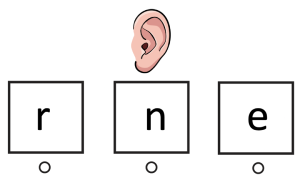
Sample Question 4 (SESAT 2):
| Here you see three groups of words. Which one of these is a sentence? |
Sample Question 5 (SESAT 2):
| Rachel is on the diving board. |
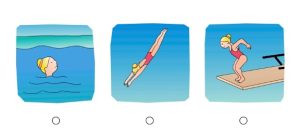
Answers: 1. 3rd letter above the bubble, 2. 1st, 3. 1st, 4. 2nd, 5. 3rd
Word Study Skills (Primary 1 – Intermediate 1)
Sample Question 1 (Primary 1):
| Choose the picture that has the e…e…e vowel sound. |
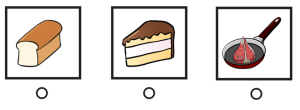
Sample Question 2 (Primary 2):
| In which word does the vowel “u” sound the same way it sounds in the word “nurse?” |
Sample Question 3 (Primary 3):
| Say: The word is “cub.” If you add an “e” to the end of the word, what new word do you have? |

Answers: 1. 1st picture above the bubble, 2. 3rd, 3. 1st
Reading Vocabulary (Primary 2 – TASK 3)
Sample Question 1 (Primary 3):
Read the following:
| We were playing in the house when Mother was gone shopping. A lamp was accidentally broken. Mother was very angry when she saw what happened. |
Choose a word that means the same as angy.
A. mad B. happy C. tired
Sample Question 2 (Intermediate 1):
Choose the word which best completes the sentence.
| The scientist was blunt in his assessment of the grim future for endangered species. |
A. rude B. bleak C. cautious
Answers:
1. A
mad; mad – very angry.
2. B
Blunt means no-nonsense of straightforward, but since the context is bad news about endangered species, in this sentence it means bleak, harsh, or uncompromising.
Reading Comprehension (Primary 1 – TASK 3)
Sample Question 1 (Intermediate 3):
What conclusion can you draw from this notice?

A. There is not restaurant within Amberly Lodge itself.
B. Anberly Lodge is set in the coutryside.
C. People generally stay for some time at Amerly Lodge.
D. Amberly Lodge is primarily a family hotel.
Sample Question 2 (Advanced 1):
Read the following and answer the question.
EARTHQUAKES
How are earthquakes recorded?
Earthquakes are recorded by instruments called seismographs. The recording they make is called a seismogram. The seismograph has a base that sets firmly in the ground, and a heavy weight that hangs free. When an earthquake causes the ground to shake, the base of the seismograph shakes too, but the hanging weight does not. Instead the spring or string that it is hanging from absorbs all the movement. The difference in position between the shaking part of the seismograph and the motionless part is what is recorded.
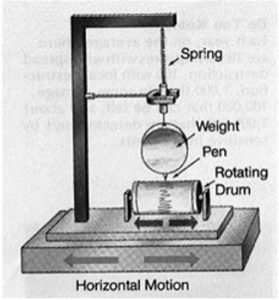
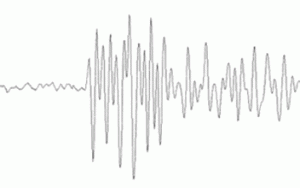
How do scientists measure the size of earthquakes?
The size of an earthquake depends on the size of the fault and the amount of slip on the fault, but that’s not something scientists can simply measure with a measuring tape since faults are many kilometers deep beneath the earth’s surface. So how do they measure an earthquake? They use the seismogram recordings made on the seismographs at the surface of the earth to determine how large the earthquake was. A short wiggly line that doesn’t wiggle very much means a small earthquake, and a long wiggly line that wiggles a lot means a large earthquake. The length of the wiggle depends on the size of the fault, and the size of the wiggle depends on the amount of slip.
The size of the earthquake is called its magnitude. There is one magnitude for each earthquake. Scientists also talk about the intensity of shaking from an earthquake, and this varies depending on where you are during the earthquake.
How does the author support the claim that scientists cannot easily measure the size of a fault?
A. By explaining that faults are deep below the surface of the earth
B. By describing how seismographs are used
C. By including a labeled diagram
D. By relating seismograms to an earthquake’s intensity
Answers:
1. C – It is probable that guests spend an extended period at Amberly Lodge. This is evident as the hotel provides them with brochures containing maps, listings of local activities, and discount vouchers for shops and restaurants—actions typically associated with longer stays.
2. A – Choosing option ‘A’ indicates comprehension of the author’s claim and its rationale. In the earthquake measurement discussion, the author argues against using a measuring tape to gauge fault size, instead providing an explanation for fault depths below the earth’s surface.
Curious to explore our SAT10 offerings? Sign up for a complimentary account and access 100 practice questions at no cost.
See if TestingMom.com supports your child’s test by your school district. If you don't see your child's school district listed, check with us! We have practice for other tests as well.



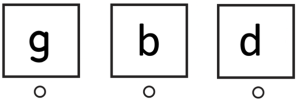



Tell us about your experiences